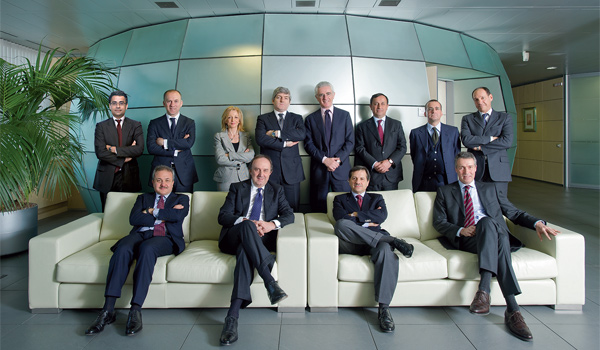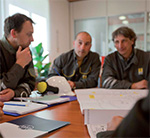Snam’s corporate governance system is based on the principles contained in the Corporate Governance Code for Listed Companies proposed by the Committee for the Corporate Governance of Listed Companies, with recommendations from the national financial regulator (Consob) on this topic and, more generally, taking into account international best practices.
Snam’s choices in this regard are made with the awareness that the rules of operation of the management and oversight bodies defined by the system must safeguard investors’ interests, preserve the balance of power, avoiding the occurrence of conflicts of interest, and be capable of having an effect on the expectations of the other stakeholders. For this purpose, the system pays special heed to observance of unbundling regulations, considering the specifics of the activities engaged in by Snam and its subsidiaries, which are subject to regulation by the Authority for Electricity and Gas and in particular the rules on functional separation.
The validity of the corporate governance system with respect to all requirements is one of the main evaluation criteria in the scores assigned by the different sustainability rating agencies.
Detailed information on Snam’s corporate governance system is included in the “Report on corporate governance and the ownership structure”, which is available on the website (www.snam.it).

Board of Directors and Committees
The Board of Directors of Snam is made up of 9 directors (3 appointed by minority shareholders), of which 5 are independent and 8 non-executives. During 2011, it met 9 times.
The Board is vested with the broadest powers for ordinary and extraordinary administration of the Company, including exclusive responsibility for defining the strategic guidelines and objectives and the approval of the respective business and financial plans. The powers that are not reserved for the Board of Directors or for the Chairman pursuant to law, the Articles of Association or a Board resolution are delegated by it to the Chief Executive Officer of the Company.
In order to carry out its functions more effectively, the Snam Board of Directors has created four committees within its ranks:
- Internal Control Committee;
- Compensation Committee;
- Nominations Committee;
- The Combined Independent Committee.
The first three committees are provided for by the Code of Corporate Governance and operate in accordance with its instructions.

The Combined Independent Committee is the collegiate body created for joint management of regulated activities involving natural gas transportation, dispatching, distribution, storage and regasification.
This body, made up of the chief executive officers of all the companies in the group, has received all powers from the Board of Directors of the parent company for the execution of its duties and works according to its own regulations.
The Board of Directors has reserved a central role for itself in defining sustainability policies and in approving the Sustainability Report, which is also brought to the attention of the Shareholders’ Meeting.
Code of Ethics and Model 231
SO2
Snam and its subsidiaries have implemented the Company’s rules of corporate administrative responsibility by adopting their own organisation, management and oversight model in accordance with Legislative Decree No. 231/2001, tailored to their own specifics. Each company has appointed its own Supervisory Body in charge of monitoring the model’s implementation and its actual application.
The Code of Ethics adopts the most modern approach to corporate ethics and sustainability, which is wholly consistent with the objective of implementing all of the values that the Company recognises, accepts and shares, and the responsibility that it assumes both internally and externally.
Added to the Snam Code of Ethics is a specific Addendum, which takes into account the specifics of the activities carried out by Snam and its subsidiaries, which are subject to regulation by the Authority for Electricity and Gas. Particular importance is given to relations with the Authority for Electricity and Gas and to the unbundling regulations.
Snam employees, regardless of position and without exception, are required to comply with and ensure compliance with these standards.
In July 2011, the Code of Ethics and Model 231 were updated, for purposes of implementing the legislative changes introduced on crimes of forging money, public credit cards and tax stamps or distinctive signs, computer crime and unlawful data processing, organised crime offences, crimes against industry and commerce, copyright crimes, and crimes against the administration of justice. In February 2012, as a result of the reorganisation of the Snam group following the implementation of the provisions of Legislative Decree No. 93/2011, as well as the introduction of environmental crimes into the body of Legislative Decree No. 231/2011, a new draft of Model 231 was approved.
SO2
Internal control system

Responsibility for the internal control system lies with the Board of Directors, which, with the assistance of the Internal Control Committee, sets its guidelines and periodically audits its suitability and actual functioning in order to ensure that the main corporate risks are identified and properly managed. The CEO is charged with implementing the guidelines formulated by the Board of Directors by planning, managing and monitoring the internal control system. Auditing the suitability of the system falls to Internal Audit, which carries out its duties maintaining relations with the Internal Control Committee, the Supervisory Body, the Board of Statutory Auditors and the company in charge of auditing the financial statements. Internal Audit also sees to handling reports received for any reason from Snam and all of the subsidiaries.
SO4-HR4
| Download XLS (20 kB) |
|
ACTIVITIES CARRIED OUT BY INTERNAL AUDIT |
2010 |
2011 | ||
| ||||
|
Total number of audits performed |
51 |
48 | ||
|
Reports received |
26 |
22 | ||
|
...those involving the Internal Control System |
10 |
8 | ||
|
...those involving accounting, auditing, fraud, etc. |
0 |
0 | ||
|
...those involving administrative responsibility pursuant to |
0 |
0 | ||
|
...those involving violations of the anti-corruption law |
|
1* | ||
|
...those involving other subjects |
16 |
13 | ||
|
Reports shelved due to lack of proof or because untrue (No.) |
16 |
11 | ||
|
Reports ending with corporate disciplinary or managerial interventions and/or submitted to the judicial authorities |
0 |
5 | ||
|
Reports in the process of examination (No.) |
6 |
6 | ||
Anti-corruption guidelines
SO2
Snam has given primary importance for a long time to the fight against corruption. The Snam Board of Directors has adopted “Anti-Corruption Guidelines”. The purpose of the Guidelines is to protect and promote Snam’s reputation by introducing a specific system of rules designed to ensure that the Company complies with the best international standards in the fight against corruption.
In this area, the Company has also changed its organisational structure with the establishment of the Anti-Corruption Unit, within the Legal and Corporate Affairs and Compliance Department, whose goal is to change existing procedures where necessary and promote both the adoption of new regulations by subsidiaries and sensitising and training staff to be aware of and comply with the Anti-Corruption Guidelines.



